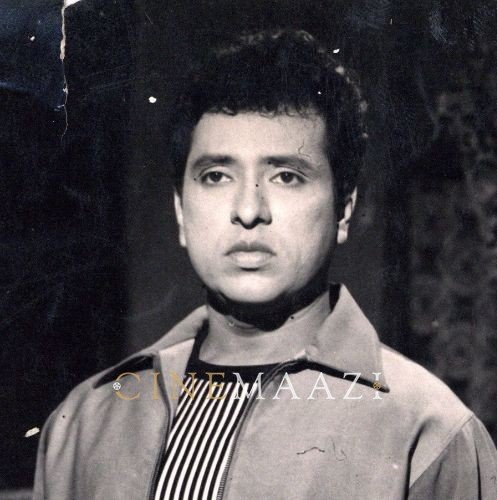Chandrasekhar

Subscribe to read full article
This section is for paid subscribers only. Our subscription is only $37/- for one full year.
You get unlimited access to all paid section and features on the website with this subscription.
Not ready for a full subscription?
You can access this article for $2 , and have it saved to your account for one year.
- Real Name: Chandrasekhar Vaidya
- Born: 7 July 1923 (Hyderabad)
- Died: 16 June, 2021 (Bombay)
- Primary Cinema: Hindi
- Parents: Gaurishankar Vaidya
One of the last remaining stars from the golden era of Hindi cinema, Chandrasekhar is fondly remembered as one of the most versatile heroes of the time. And yet, if it was not for the unpredictability of the course of history he may have never become a film star.
He was born on 7 July 1923 in Hyderabad to Gaurishankar Vaidya, an Ayurvedic doctor. Despite having Telugu as his mother tongue, Chandrasekhar was schooled in Urdu and Farsi. As a young man he was fond of wrestling. His common sparring partner was Shankar of Shankar-Jaikishan fame. But the political situation in Hyderabad was worsening. When the Arya Samaj rebelled against the Nizam, a crackdown on the youth started which prompted Chandrasekhar to flee to Bangalore. In Bangalore he tried to act in films but his poor grasp of Telugu prevented him from breaking any ground. Upon the advice of studio people, he travelled to Bombay in 1941 to try his luck there.
Initially working as a junior artist, Chandrasekhar was ultimately hired by W.Z. Ahmed and Nina’s Shalimar Studio at the insistence of Shamshad Begum. He acted in Shalimar Studios’ Prithviraj Sanyukta (1946). Under Pt. Bharat Vyas’s direction he acted as a supporting hero in Rangila Rajasthan (1949). As tensions soared in Pune after Mahatma Gandhi’s assassination, Chandrasekhar had to leave Pune for Bombay.
In Bombay, he met the legendary Marathi actor and director Keshavrao Date who got him a job at V. Shantaram’s Rajkamal Studios. He worked in two of their films – Apna Desh (1949) and Dahej (1950). He also learned editing while he was there. But due to personal issues, his time there was short-lived. Chandrasekhar played a significant role in the Bharat Bhooshan starrer Bebus (1950). Chandrasekhar credits this role as being an important step in his career. It led to him getting the lead role in V. Shantaram’s Surang (1953). Surang established him as a leading male hero in the industry and offers started pouring in soon after. He acted in films like Kavi (1954), Mastana (1954), Baradari (1955), Zindagi Ke Mele (1956), Taxi Stand (1958), Tel Malish Boot Polish (1961) and many more. He worked extensively in Bhagwan Dada and C.M. Trivedi’s films.
Chandrasekhar was hardworking and laboured to make up for any of his shortcomings. As he did not have any dancing experience he trained himself to become a better dancer. He made two films as a producer-director – Cha Cha Cha (1964) and Street Singer (1966) where he was a dancing hero. For these two films, Chandrashekhar took dance classes in Dadar and became an expert. He won over audiences with his new avatar when he grooved with Helen in the song Ek chamelee ke mandvey taley, Voh hum na they and Subha na aayee. For Street Singer the music was composed by his old friend Shankar, who had to work under the pseudonym Sooraj due to other contractual obligations.
After 35 films as a hero, he transitioned into character roles. He played important roles in Ajnabi (1974), Mehbooba (1976), Saajan Bina Suhagan (1978), Namak Halaal (1982), Coolie (1983) and Sharaabi (1984).
Among the acclaimed directors he worked with are V. Shantaram, Nitin Bose, Vijay Bhatt, and Debaki Bose. Having worked with such eminent names, he felt no need to train in any acting school. He felt that these directors were schools in themselves. Together with actor Manmohan Krishna, he started a trade union for actors, back in the early 1950s. It metamorphosed into the Cine Artistes Association (CAA/1958) and its spin-offs, including Cine and TV Artistes Association (CINTAA). He served as President and held other posts in these unions for several decades in total.
After a long and productive career in films, Chandrasekhar retired. Counted among the class of actors who started from scratch as an extra and with hard work went on to become a great actor and filmmaker, besides being an avid reader. Chandrashekhar now lives in his bungalow in Mumbai, close to his son and daughter.







.jpg)



